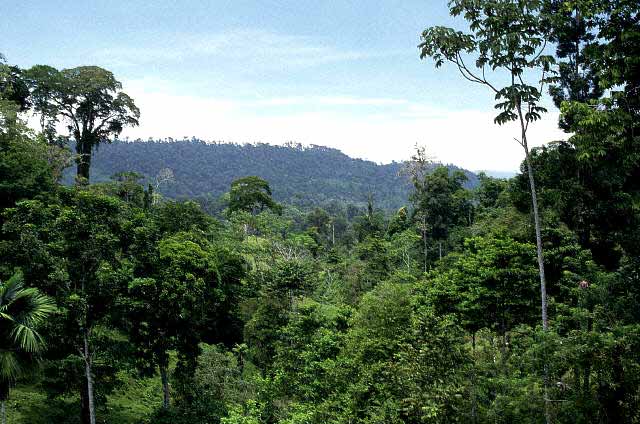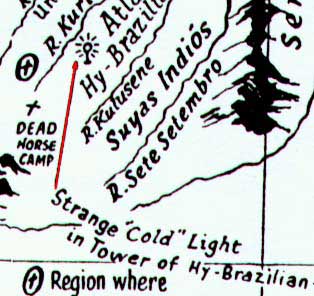
Just
prior to Colonel Fawcett's ill-fated expedition, a Nafaqua Indian
chief (whose territory lay between the Xingu and Tabatinga Rivers)
told Colonel Fawcett about a "city" where strange temples
could be found and baptismal ceremonies were practiced. The Indians
there spoke of houses with "stars to light them, which never went out."
Tales of strange "cold lights" is not new. Father Evariste-Regis Huc (1813-1860) traveled extensively in Asia and left a description of an ever-burning lamp that he had seen in Tibet.
In 1963, at a conference on street lighting and traffic in Pretoria, South Africa, C.S. Downey talked about a village in the jungle near Mount Wilhelmina in the western part of New Guinea (which had been cut off from civilization) with "a system of artificial illumination equal, if not superior, to the 20th century." Traders who had penetrated this remote area lost amid high mountains said they "were terrified to see many moons suspended in the air and shining with great brightness all night long." These artificial moons were large stone balls mounted on pillars. After sunset, they would glow a strange neonlike light.
Ion Idriessa, a well known Australian writer who lived among the Torres Strait islanders, wrote in his Drums of Mer a story about booyas, a term he got from the old aborigines. A booya is a round stone set in a large bamboo socket. When the chief pointed the stone toward the sky, a thunderbolt flashed. This "cold light" was so brilliant it enveloped all near it.
On the other
side of the Pacific, Barco Centenera, a memoirist of the conquistadors,
wrote about the discovery of a strange source of illumination
in South America. In 1601, he wrote about the island city of
Gran Moxo, near the source of the Paraquay River in the Matto
Grosso, stating: "On the summit of a 7.75 meter pillar was
a great moon, which illuminated all the lake, dispelling darkness."

Location of "Cold Light"
Harold Wilkins 1949 map
Colonel Fawcett was told by the natives of Matto Grosso that mysterious "cold lights" had been seen by them in the lost cities in the jungle. He wrote to the British author Lewis Spense: "These people have a source of illumination which is strange to us - in fact, they are a remnant of civilization which has gone and which has retained old knowledge."
In Exploration Fawcett (Lt. Col. Percy Fawcett and Brian Fawcett, 1953) Colonel Fawcett states: "This is the first but not the last time I heard of these permanent lights found occasionally in the ancient houses built by that forgotten civilization of old. I knew that certain Indians of Ecuador were reputed to light their huts at night by means of luminous plants, but that, I considered, must be a different thing all together. There was some secret means of illumination known to the ancients that remains to be rediscovered by the scientists of today - some method of harnessing forces unknown to us."
Colonel Fawcett was determined to find this lost city, and in 1925 he launched an expedition deep into the interior of the Matto Grosso region of Brazil in search of that lost city.
Source:
Lost Cities & Ancient Mysteries of South America
by David Hatcher Childress
We Are Not The First by Andrew Tomas
Image of rainforest purchased from corbis.com
|
|
|